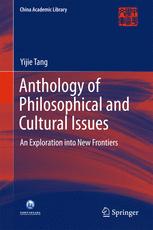

Most ebook files are in PDF format, so you can easily read them using various software such as Foxit Reader or directly on the Google Chrome browser.
Some ebook files are released by publishers in other formats such as .awz, .mobi, .epub, .fb2, etc. You may need to install specific software to read these formats on mobile/PC, such as Calibre.
Please read the tutorial at this link: https://ebookbell.com/faq
We offer FREE conversion to the popular formats you request; however, this may take some time. Therefore, right after payment, please email us, and we will try to provide the service as quickly as possible.
For some exceptional file formats or broken links (if any), please refrain from opening any disputes. Instead, email us first, and we will try to assist within a maximum of 6 hours.
EbookBell Team

5.0
40 reviewsThis book argues that a general understanding of traditional Chinese philosophy can be achieved by a concise elaboration of its truth, goodness and beauty; that goodness and beauty in Chinese philosophy, combined with the integration of man and heaven, knowledge and practice, scenery and feeling, reflect a pursuit of an ideal goal in traditional Chinese philosophy characterized by the thought mode uniting man and nature.This book also discusses the anti-traditionalism of the May Fourth Movement, explaining that the true value of “sagacity theory” in traditional Chinese philosophy, especially in Neo-Confucianism in the Song and Ming dynasties, lies in its insights into universal life. In addition, existing ideas, issues, terminologies, concepts, and logic of Chinese philosophical thought were actually shaped by Western philosophy. It is necessary to be alienated from traditional status for the creation of a viable “Chinese philosophy.” “Modern Chinese philosophy” in the 1930s and 1940s was comprised of scholarly work that characteristically continued rather than followed the traditional discourse of Chinese philosophy. That is to say, in the process of studying and adapting Western philosophy, Chinese philosophers transformed Chinese philosophy from traditional to modern.In the end of the book, the author puts forward the idea of a “New Axial Age.” He emphasizes that the rejuvenation of Chinese culture we endeavor to pursue has to be deeply rooted in our mainstream culture with universal values incorporating cultures of other nations, especially the cultural essence of the West.